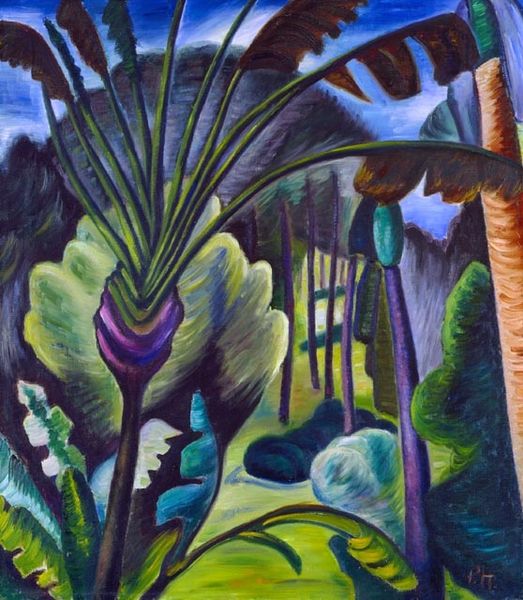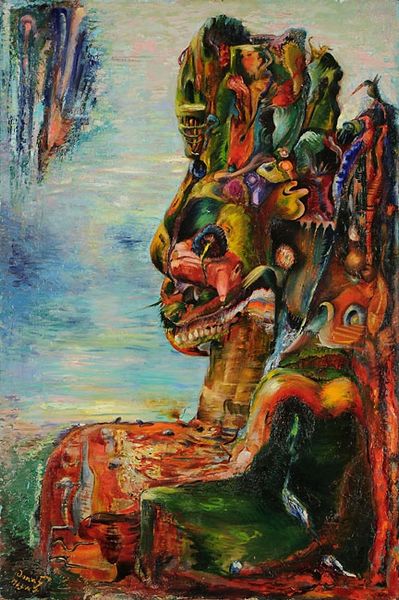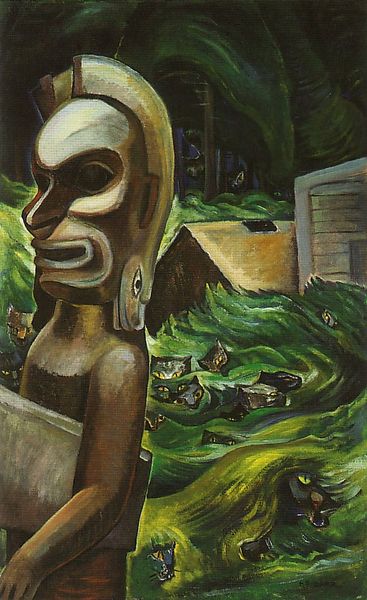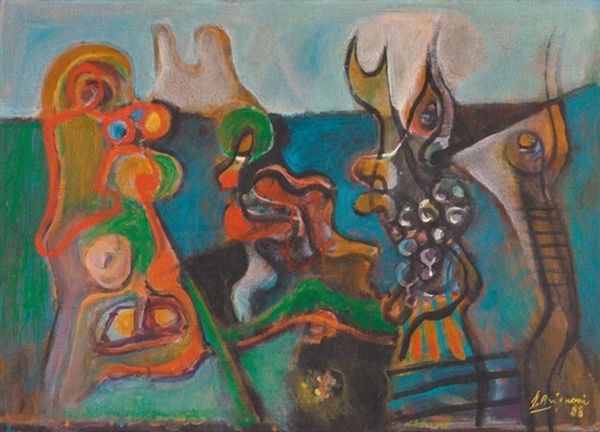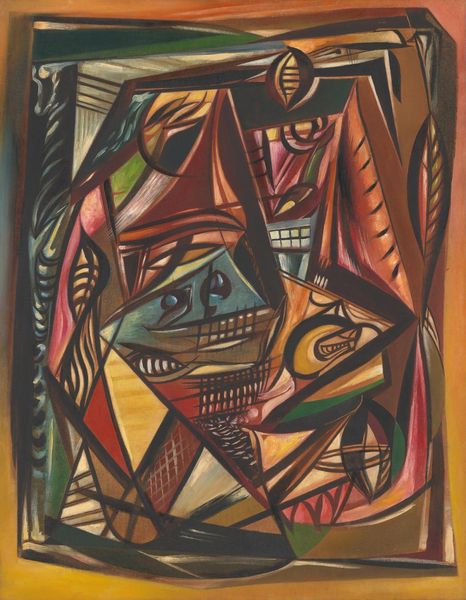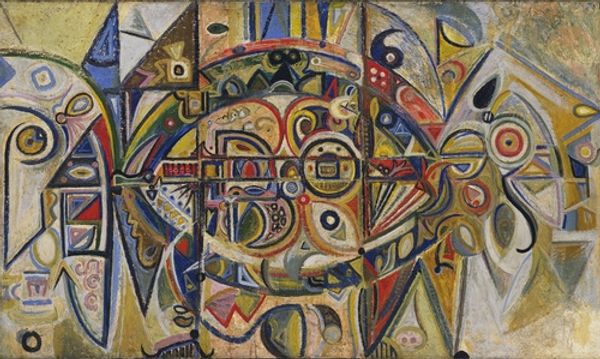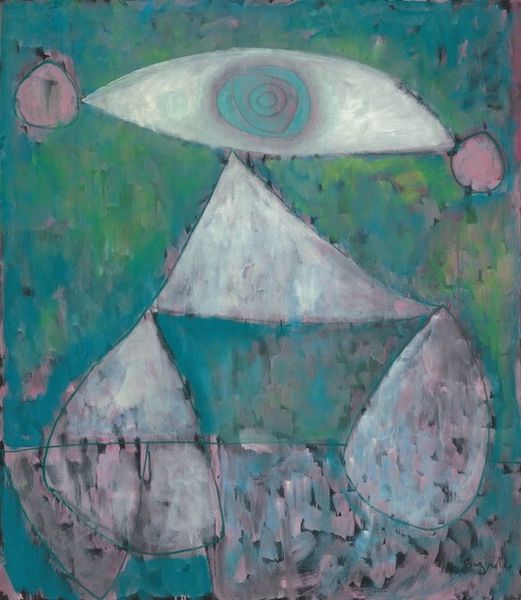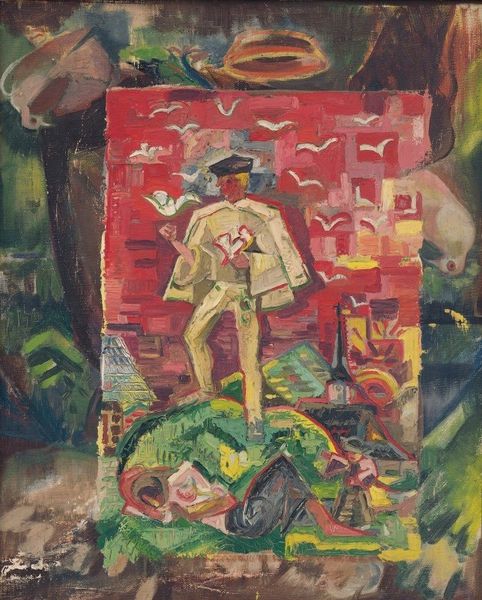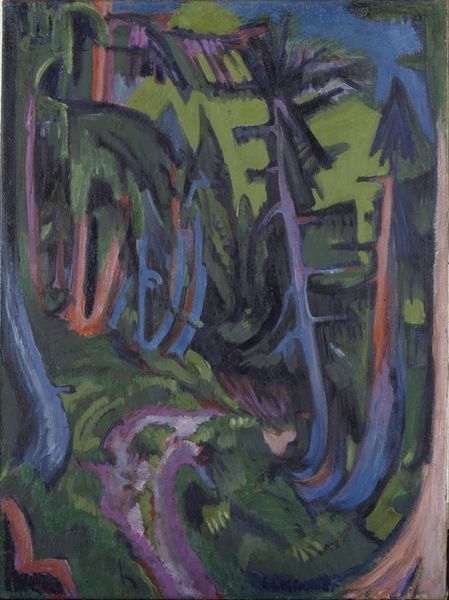
#
abstract painting
#
canvas painting
#
fictional-character
#
possibly oil pastel
#
oil painting
#
fluid art
#
acrylic on canvas
#
painting painterly
#
animal drawing portrait
#
portrait art
#
fine art portrait
Copyright: Public domain
Curator: Let’s turn our attention to "A Skidegate Beaver Pole" by Emily Carr. I find it quite striking, particularly the way Carr employs such muted tones to convey the monumentality of the pole. It almost feels spectral. Editor: Yes, there's definitely a dreamlike quality to the composition. The hazy, almost fauvist rendering of the surrounding landscape contrasts with the solidity suggested by the central totem. How do you see this interplay of styles working in the image? Curator: I see this painting as a profound engagement with indigeneity, colonial history, and Carr’s own complex positionality as a white artist. Her visits to indigenous communities in British Columbia shaped her work, and it's important to recognize her paintings are also a record of colonial disruption to First Nations communities at the time. The totem, seemingly static and powerful, stands as a witness to changing times, subtly questioning power dynamics and cultural survivance. Editor: Indeed. The surface texture is quite active. Observe the visible brushwork – energetic and swirling, especially noticeable in the skies and foliage, that gives the work a sense of immediacy. It almost dissolves the background forms and concentrates the viewer’s attention onto the frontal totem. Curator: Absolutely. One might analyze the totem itself as a text laden with symbols of ancestry, stories, and cultural connections to place. Its visual dominance is a strong counter-narrative within the art historical canon that traditionally marginalized indigenous artistic expression. Editor: And look how the form is rendered, almost flattened. This contributes to the surface dynamism while still allowing us to perceive the structure and the symbolic weight it carries. It seems less about verisimilitude and more about…essence? Curator: Yes, it's in Carr's rendering of its "essence," as you put it, where the tensions lie, capturing the complexities of encountering and representing another culture during an era defined by the violent encroachment and assimilationist policies enacted against Indigenous populations in Canada. It asks critical questions about representation. Editor: Reflecting on the artwork’s composition and textural interplay alongside its socio-historical context, the painting, to me, invites consideration of our gaze and its implications. Curator: For me, contemplating Carr's rendering through the lens of postcolonial theory illuminates not just her artistic interpretation but also prompts critical reflection on our ongoing dialogues about decolonization and allyship.
Comments
No comments
Be the first to comment and join the conversation on the ultimate creative platform.

